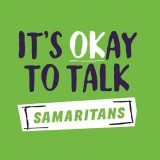 Journalists have been urged to avoid naming specific websites or online games linked to self-harm or suicidal behaviour in stories they write.
Journalists have been urged to avoid naming specific websites or online games linked to self-harm or suicidal behaviour in stories they write.
Mental health charity Samaritans has produced new guidance for journalists reporting on such alleged links after media coverage of concerns being raised over “a number of examples of online challenges and computer games relating to suicide and self-harm.”
According to Samaritans, to date there has been “no officially confirmed evidence” linking specific challenges to such behaviour, but in some cases “fears have been heightened to extreme levels following widespread incorrect information.”
The charity has now published guidelines for journalists covering such issues in a blog on the Independent Press Standards Association’s website.
Lorna Fraser, executive lead of Samaritans’ media advisory service, wrote in the blog post: “Press coverage which raises awareness of more general online safety to young audiences, adults who work with them, and parents, can be really helpful. And while the intention is to raise awareness, stories which speculatively cite a game or challenge as a cause of death, often inadvertently serve to advertise these and can draw more people to engage in them.
“Extensive research carried out across the world over the last six decades consistently links certain types of media reporting of suicide with increases in suicide rates. This includes reports which give detailed accounts of suicide methods, stories which are placed prominently and coverage which is sensational and/or extensive. That’s why reporting on issues relating to suicide and self-harm requires a different approach to reduce any risk to audiences.
“Due to the relationship between media coverage and suicide contagion, speculation around the cause for a suicide death carries significant risk. It can oversimplify the perceived issues which could lead a person to carry out such drastic behaviour and can increase the likelihood of other vulnerable people identifying with this person, potentially influencing them to engage in suicidal behaviour.
“Samaritans suggests it is far safer to cover more general messages, without naming specific websites or games perceived to be harmful.”
Examples given by Samaritans include:
– Parents, carers and adults who work with children and young people should be encouraged to talk to them about their online activity. In this way parents are better equipped to support and advise them on keeping safe, including what they can do if they do come across content that upsets them.
– Children should be encouraged to share what they’re playing or looking at, rather than parents asking them if they are playing a specific game, as this may draw their attention to it.
– Sharing of online content that may be distressing or cause harm, including naming these, should be discouraged.
– Children and young people should be listened to and supported if they come across content online which concerns or upsets them, including interaction with others and posts or comments made.
– Children and young people should be made aware of what action to take if they encounter material online which causes them concern or distress. There are various ways to report inappropriate online content, most social media platforms have facilities for reporting content for review and potential removal.
– Providing information and signposting to sources of support for young people is helpful.
Lorna added: “Increasingly people use the internet to participate in online activities and to share their thoughts and feelings. For the majority this will be a positive experience and many who reach out for help online receive valuable support.
“Samaritans suggests that if you receive information linking a game or challenge to self-harm or suicidal behaviour, it’s important to consider whether this information has come from an official source and is verified, or if this is an individual’s view or merely speculation.
“This is essential in establishing whether or not this is an accurate representation of what may have contributed to a person’s death and to be aware of what other factors may have been at play. There is likely to have been a range of contributing factors and this complexity should be reflected, to reduce the risk of contagion, especially in cases involving young people.”





 Follow HTFP on Twitter
Follow HTFP on Twitter